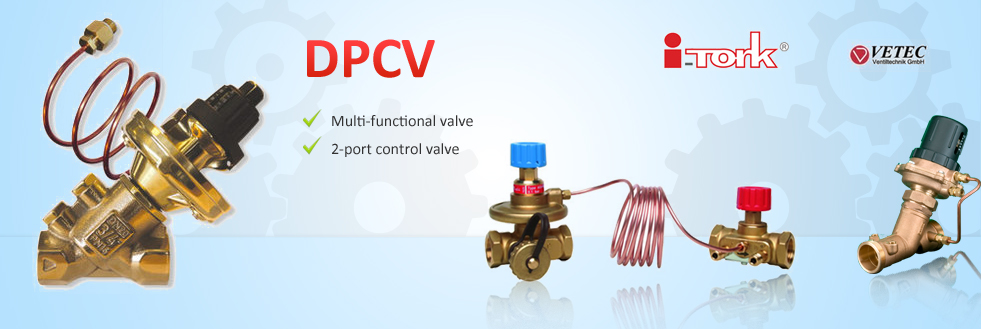DPCV
A DPCV contains a diaphragm that separates the upper / lower chambers of the valve and a spring-loaded piston. The piston is connected to the diaphragm, and opens the valve when differential pressure rises and closes it as the differential pressure falls. For those periods of equilibrium between diaphragm pressure and the piston spring, the valve position remains steady.
DPCVs are important to the efficient operation of systems based on variable speed pumps and 2-port control valves.
In variable flow circuits, Differential Pressure Control Valves (DPCV) are typically used to maintain a constant pressure differential across a sub-branch. This protects downstream control valves from excessive pressures, and also neutralises the effects of pressure variation caused by other control valves in the circuit.

1.Differential pressure controller DPC
The differential pressure controller maintains a constant differential pressure across the control valve. The pressure difference ∆Pcv(P2-P31 on the membrane is balanced with the force of the spring. Whenever the differential pressure across the control valve changes (due to a change in available pressure, or movement of the control valve) the hollow cone is displaced to a new position which brings a new equilibrium and therefore keeps the differential pressure at a constant level.































